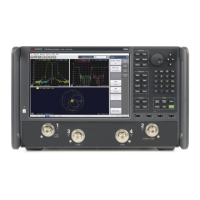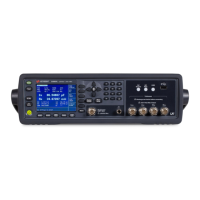8 Frequency Scan Measurement
AMPTD Y Scale
Readback V
Initial S/W Revision Prior to A.02.00
Modified at S/W Revision A.02.00
A
Sets the amplitude unit for the selected amplitude scale (log/lin) to Ampere.
Key Path
AMPTD Y Scale, Y Axis Unit
Example UNIT:POW A
Dependencies Grayed out if an Amplitude Correction with an Antenna Unit is ON.
Readback A
Initial S/W Revision Prior to A.02.00
Modified at S/W Revision A.02.00
dBµV
Sets the amplitude unit for the selected amplitude scale (log/lin) to dBµV.
Key Path
AMPTD Y Scale, Y Axis Unit
Example UNIT:POW DBUV
Dependencies Grayed out if an Amplitude Correction with an Antenna Unit is ON.
Readback dBµV
Initial S/W Revision Prior to A.02.00
Modified at S/W Revision A.02.00
dBµA
Sets the amplitude unit for the selected amplitude scale (log/lin) to dBµA.
The unit dBuA can also appear as an Antenna Unit. This will be used by customers using current probes,
because current probes are often supplied with conversion tables that provide the transducer factors.
When dBuA is used as an Antenna Unit the normal conversion from power to amps for dBuA (based on the
analyzer input impedance) is not done, but instead the conversion is based solely on the Correction that
contains the transducer factors. This is what distinguishes dBuA as a normal unit from dBuA as an antenna
unit. When querying the Y-Axis unit, you can query the Antenna Unit to distinguish between regular dBuA
and the dBuA antenna unit. If :CORR:CSET:ANT? returns NOC (for No Conversion), you are using a normal
Y Axis dBuA. If it returns UA you are using an Antenna Unit dBuA.
388 EMI Receiver Mode Reference

